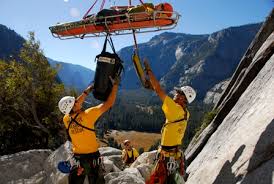
A few years ago, on the recommendation of multiple friends and gushing book reviewers, I picked up Cheryl Strayed’s Wild. And I finished it. But I didn’t read it in the normal fashion. I hate-read it. I sat in my easy chair with a cup of coffee or herbal tea or small juice glass with a precisely measured ounce of whisky, and I eagerly followed each of Ms. Strayed increasingly dopey life choices: the drugs, the promiscuity, the extra drugs, and finally, the decision to start the ridiculously long, arduous, and often harrowing Pacific Crest Trail with less preparation than most people would undertake for a trip to an outlet mall. And with equal eagerness, I hoped she would fail. Or worse.
The story seemed designed to thwart even basic human identification with the protagonist. When you read an account of Captain Cook’s years-long voyage, you’re turning pages to find out what unexpected challenges arise and how the captain’s extensive experience, study and provisioning serve him in these dire circumstances. You’re reading about a deadly contest between worthy opponents. In Wild, you’re reading about a pointedly indifferent moron, someone who shows little concern for her own well being and the safety of those who might be called upon to drag her sorry rear-end out of the woods if she tumbles down a steep snow field or gets a nasty disease.
Apparently, Strayed is not alone. The news last summer was filled with accounts of folks who vastly overestimated their survival skills and vastly underestimated the perils of venturing—often alone—into the wild.
(Recall that Into the Wild was another story of a person who thought it was possible to take on the wilderness without taking care of business. I didn’t read that book, because I try to limit myself to one hate-reading a year and I’ve been backed up. I’m looking at you, Patti Smith.)
This happens more often than you might think. From North Country Public Radio’s Brian Mann: In New York State, forest rangers averaged one search-and-rescue operation a day in 2016. This year, their numbers are up. Yosemite has about 250 search-and-rescue operations a year.
Overall, the National Park Service gets about one call for help for each 100,000 visitors, which maybe doesn’t sound like much until you realize the parks get around 300 million visitors a year. And the cost can run in the millions of dollars.
Granted not everyone is guilty of Cheryl Strayed-level boneheadedness. Weather can sneak up on people. Equipment can and does fail. And sometimes people are just being people: the NPS stats on why people need rescues (a morbid list, available here) note that 2 percent of calls were due to alcohol and drugs and 0.3 percent were caused by “horseplay.”
While there’s obviously no single explanation for why people get in trouble in nature, Dennis Lewon, editor-in-chief of Backpacker magazine, suggests that one problem might be social media: “Thirty years ago, it took a little bit of work to find out where to go, looking up guidebooks, calling park services, getting a magazine,” said Dennis Lewon, editor-in-chief of Backpacker magazine. These days, he claims, people see a pretty picture on Instagram or Facebook and decide to check the place out.









